wire rope association brands
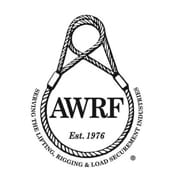
Wire rope manufacturers produce their products in order to provide a high load capacity, versatile alternative to weaker ropes like manila rope or hemp rope. Wire rope products are used for a wide variety of motion transmission applications, among them: lifting, baling, tie down, hoisting, hauling, towing, mooring, anchoring, rigging, cargo control, guidance and counterbalance. They can also be used as railing, fencing and guardrailing.
Wire rope is a must-have for many heavy duty industrial applications. From mining to forestry to marine and beyond, there’s wire rope for almost every job. Some of the many industries in which wire rope is popular include: construction, agriculture, marine, industrial manufacturing, fitness, sports and recreation (plastic coated cables for outdoor playground equipment and sports equipment), electronics, theater (black powder coated cables for stage rigging), mining, gas and oil, transportation, security, healthcare and consumer goods.
Wire rope as we know it was invented just under 200 years ago, between 1831 and 1834. At that time, the goal was to create a rope strong enough to support work in the mines of the Harz Mountains. Invented by Wilhelm Albert, a German mining engineer, this wire rope consisted on four three-stranded wires. It was much stronger than older rope varieties, such as manila rope, hemp rope and metal chain rope.
While studying at Freiburg School of Mines, a man named L.D.B. Gordon visited the mines in the Harz Mountains, where he met Albert. After he left, Gordon wrote to his friend Robert Stirling Newall, urging him to create a machine for manufacturing wire ropes. Newall, of Dundee, Scotland, did just that, designing a wire rope machine that made wire ropes with four strands, consisting of four wires each. After Gordon returned to Dundee, he and Newall, along with Charles Liddell, formed R.S. Newall and Company. In 1840, Newall received a patent for “certain improvements in wire rope and the machinery for making such rope.”
In 1841, an American manufacturer named John A. Roebling began producing wire rope for suspension bridges. Soon after, another set of Americans, Josiah White and Erskine Hazard, started incorporating wire rope into coal mining and railroad projects, forming Lehigh Coal & Navigation Company (LC&N Co.). In 1848, wire rope from their wire rope factory in Mauch Chunk, Pennsylvania provided the lift cables needed to complete the Ashley Planes Project. This project sought to improve the performance and appearance of the freight railroad that ran through Ashley, Pennsylvania, by adding lift cables. This increased tourism and increased the railroad’s coal capacity. Before, cars took almost four hours to return; after, they took less than 20 minutes.
Wire rope likewise changed the landscape (again) in Germany, in 1874, when an engineering firm called Adolf Bleichert & Co. used wire rope to build Bi-cable aerial tramways. These allowed them to mine the Ruhr Valley. Several years later, they also used wire rope to build tramways for the German Imperial Army and the Wehrmacht. These tramways were wildly successful, opening up roads in Germany and all over Europe and the USA.
Since the 1800s, manufacturers and engineers have found ways to improve wire rope, through stronger materials and material treatments, such as galvanization, and different rope configurations. Today, wire rope makes possible many heavy industrial processes. It has become a necessity of the modern world.
Strands are made by tightly twisting or braiding individual wire together. One strand could have anywhere between two and several dozen wire filaments depending on the necessary strength, flexibility, and weight capacity.
One of the most dynamic elements of wire cables is the inner core. The strands are wrapped around the core, and it can be made of different metals, fibers, or even impregnated fiber materials. For heavy applications, cores are often made of a different strand of wire called an independent wire rope core (IWRC). An IWRC has a considerable amount of flexibility and it is still very strong. In fact, at least 7.5% of the strength increase in a wire rope can be attributed to an IWRC.
While they sometimes use other metals, like aluminum, nickel, copper, titanium, and even bronze for some applications, manufacturers primarily produce wire rope from steel. This is because steel is very strong and stretchable. Among the most common types they use are: galvanized wire, bright wire, stainless steel and cold drawn steel.
Of the wire rope steels, cold drawn carbon steel wire is most popular, although stainless steel wire rope is sometimes employed as well. Stainless steel rope is most popular for its anti-corrosive properties. Bright wire rope, a type of ungalvanized steel wire rope, is also popular. For added strength and durability, galvanized steel wire rope/galvanized steel cables are a very popular choice. Galvanized aircraft cable, for example, is always a must in aerospace.
When choosing or designing a custom wire rope for your application, suppliers consider factors such as: the environment in which the rope will function, required rust resistance, required flexibility, temperature resistance, required breaking strength and wire rope diameter. To accommodate your needs, manufacturers can do special things like: make your rope rotation resistant, color code your rope, or add a corrosion resistant coating. For instance, sometimes they specially treat and coat a cable with plastic or some other compound for added protection. This is particularly important to prevent fraying if the wire rope is often in motion on a pulley.
Manufacturers and distributors identify the differences in wire cable by listing the number of strands and the amount of wires per strand so that anyone that orders understand the strength of the cable. Sometimes they are also categorized by their length or pitch. Common examples of this include: 6 x 19, 6 x 25, 19 x 7, 7 x 19, 7 x 7, 6 x 26 and 6 x 36.
More complex wire rope identification codes connote information like core type, weight limit and more. Any additional hardware like connectors, fasteners, pulleys and fittings are usually listed in the same area to show varying strengths and degrees of fray prevention.
Cable wire rope is a heavy-duty wire rope. To give it its high strength, manufacturers construct it using several individual filaments that are twisted in strands and helically wrapped around the core. A very common example of cable wire rope is steel cable.
Spiral rope is made up an assemblage of wires with round or curved strands. The assemblage features at least one outer layer cord pointed in the opposite direction of the wire. The big advantage of spiral ropes is the fact that they block moisture, water and pollutants from entering the interior of the rope.
Similarly, stranded rope steel wire is made up of an assemblage of spirally wound strands. Unlike spiral rope, though, its wire patterns have crisscrossing layers. These layers create an exceptionally strong rope. Stranded rope may have one of three core material types: wire rope, wire strand or fiber.
Wire rope chain, like all chains, is made up of a series of links. Because it is not solid, wire rope chain is quite flexible. At the same time, it is prone to mechanical failure.
Wire rope slings are made from improved plow wire steel, a strong steel wire that offers superior return loop slings and better security. The plow wire steel also shields rope at its connection points, which extends its working life. Wire rope slings, in general, provide their applications with increased safety, capacity and performance. Wire rope sling is a rope category that encompasses a wide range of sub-products, such as permaloc rope sling, permaloc bridle slings and endless slings. These and other wire rope slings may be accompanied by a wide variety of sling terminations, such as thimbles, chokers and hooks.
Wire rope offers its user many advantages. First, design of even distribution of weight among strands makes it ideal for lifting extremely heavy loads. Second, wire rope is extremely durable and, when matched properly to the application, can withstand great stress and elements like corrosion and abrasion. In addition, it is very versatile. Its many iterations and the ways in which the rope can treated means that users can get rope custom fit for virtually any application.
Depending on the type of wire rope with which you are working and your application, you may want to invest in different accessories. Among these accessories are: wire rope clips, steel carabiners, fittings, fasteners and connections.
To ensure that your wire rope quality remains high, you must regularly inspect them for wear and degradation. The right wire rope should be selected for a particular use. Watch out for performance-impacting damage like: rust, fraying and kinks. To make sure that they stay in tip-top shape, you should also clean and lubricate them as needed. Check for this need as a part of your regular inspection.
Rope care is about more than inspection. It’s also about making an effort to use and store them properly every time you use them. For example, never exceed your rope’s rated load and breaking strength. Doing so will not only cause the weakening of your cable, but it may even cause immediate breakage. In addition, always store your wire rope cable in a dry and warm area, away from those elements that could cause premature rusting or other damage. Finally, always carefully wind your wire rope when you’re done with it, so as to avoid kinks. If you follow all these tips and treat your wire rope assemblies well, they will reward you with a long and productive service life.
Always make sure that you purchase wire rope that matches your industry and regional standards. Some of the most widely referenced standards organizations for wire rope include: ISO, ASTM International and OSHA. Talk over your specifications and application with your wire rope supplier to figure out what’s best for you.
If you’re in the market for a wire rope or a wire rope assembly, the best way to know you’re getting something that will both perform well and be safe if by working with a vetted professional. Find one among the list we’ve provided on this page. Check out their profiles to get an idea of the services and products they offer. Pick out three or four to whom you’d like to speak, and reach out. Talk to them about your specifications, standard requirements and budget. Ask about lead times and delivery options. Once you’ve spoken with all of them, compare and contrast their answers. You’ll know you’ve found the one when you talk to a wire rope company that is willing to go above and beyond for your satisfaction.

Our Association was formed in 1975 and incorporated the following year by a group of concerned businessmen who felt there was a need for sling fabricators and special rigging components manufacturers to join together to form a trade association.

Our Association was formed in 1975 and incorporated the following year by a group of concerned businessmen who felt there was a need for sling fabricators and special rigging components manufacturers to join together to form a trade association. Originally created by representatives from nine companies in the United States, in two decades the organization grew to address the needs of over 400 member companies worldwide.
AWRF promotes interests common among companies manufacturing, fabricating, or distributing lifting, rigging and load securement devices made of chain, rope, and synthetic products. The association works to establish, acquire, preserve, and disseminate various technical information, and encourages the development of safety standards and programs, and product identification procedures. Assistance has been provided for establishing and maintaining adequate products liability insurance, as well as other insurance needs of the industry. Common problems and purposes of the industry, such as those involving production, distribution, service and safety are reviewed and advanced by lawful means on a regular basis.
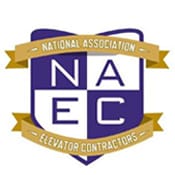
“AWRF promotes interests common among companies manufacturing, fabricating, or distributing lifting, rigging and load securement devices made of chain, rope, and synthetic products. The association works to establish, acquire, preserve, and disseminate various technical information, and encourages the development of safety standards and programs, and product identification procedures. Assistance has been provided for establishing and maintaining adequate products liability insurance, as well as other insurance needs of the industry. Common problems and purposes of the industry, such as those involving production, distribution, service and safety are reviewed and advanced by lawful means on a regular basis.” – About AWRF – Associated Wire Rope Fabricators
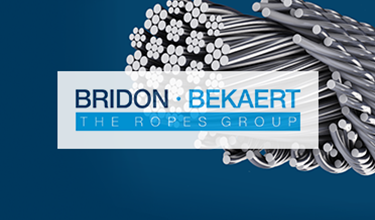
AWPA provides its members with industry data. General information regarding imports of rod, wire and wire products into the US, by volume and value, are available in the aggregate and by country of import. In addition, AWPA provides other data to assist members in bench marking themselves against other wire companies.

AWRF promotes interests common among companies manufacturing, fabricating, or distributing lifting, rigging and load securement devices made of chain, rope, and synthetic products. The association works to establish, acquire, preserve, and disseminate various technical information, and encourages the development of safety standards and programs, and product identification procedures.
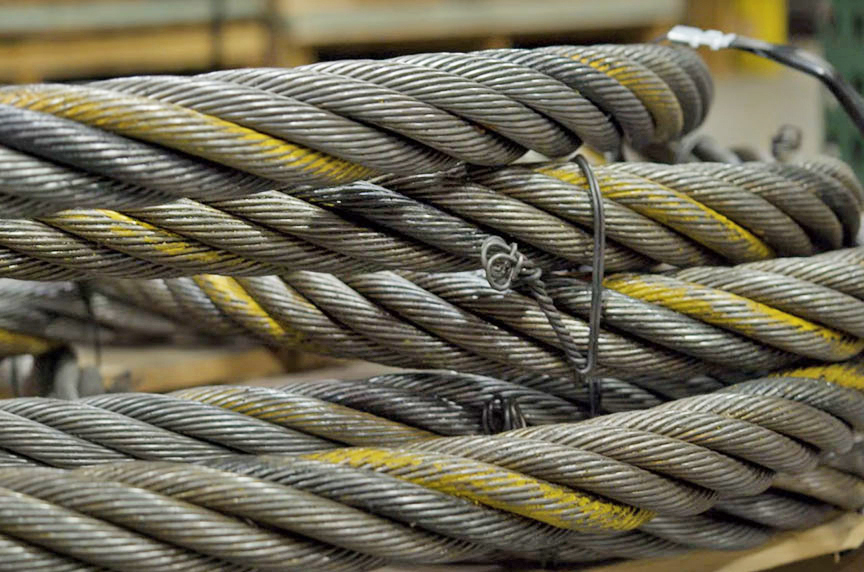
American Wire Rope and Sling (AWRS) is part of ECP American Steel, LLC and its family of companies, including American Steel & Crane. Based in Fort Wayne, Indiana, AWRS has a long history of service to Indiana’s professional contractors and manufacturers that dates back to 1933.
Through quality service, American Wire Rope and Sling continues this tradition of providing name-brand products for the rigging industry. Proudly, AWRS has grown from its original home in Fort Wayne to one of the largest rigging houses in Indiana with branches in Indianapolis and Mishawaka.
Over the years, we have been the first in Indiana to: manufacture Single-Path & Twin-Path® round slings; manufacture and private-label our own line of nylon and polyester web slings; manufacture SLINGMAX® High Performance Fiber (HPF) slings and other products; patent a load-leveling device and HPF bridle slings; implement electronic sling inspections; operate six wire rope swaggers; operate five test beds including the largest in Indiana; operate 12 sewing machines; and operate two round sling machines.
AWRS is the only Indiana rigging house to hold membership in the leading industrial associations: Associated Wire Rope Fabricators (AWRF) and the Web Sling and Tie-Down Association (WSTDA). Individuals on our executive staff have served on the board and chaired various committees of these industry-leading associations.
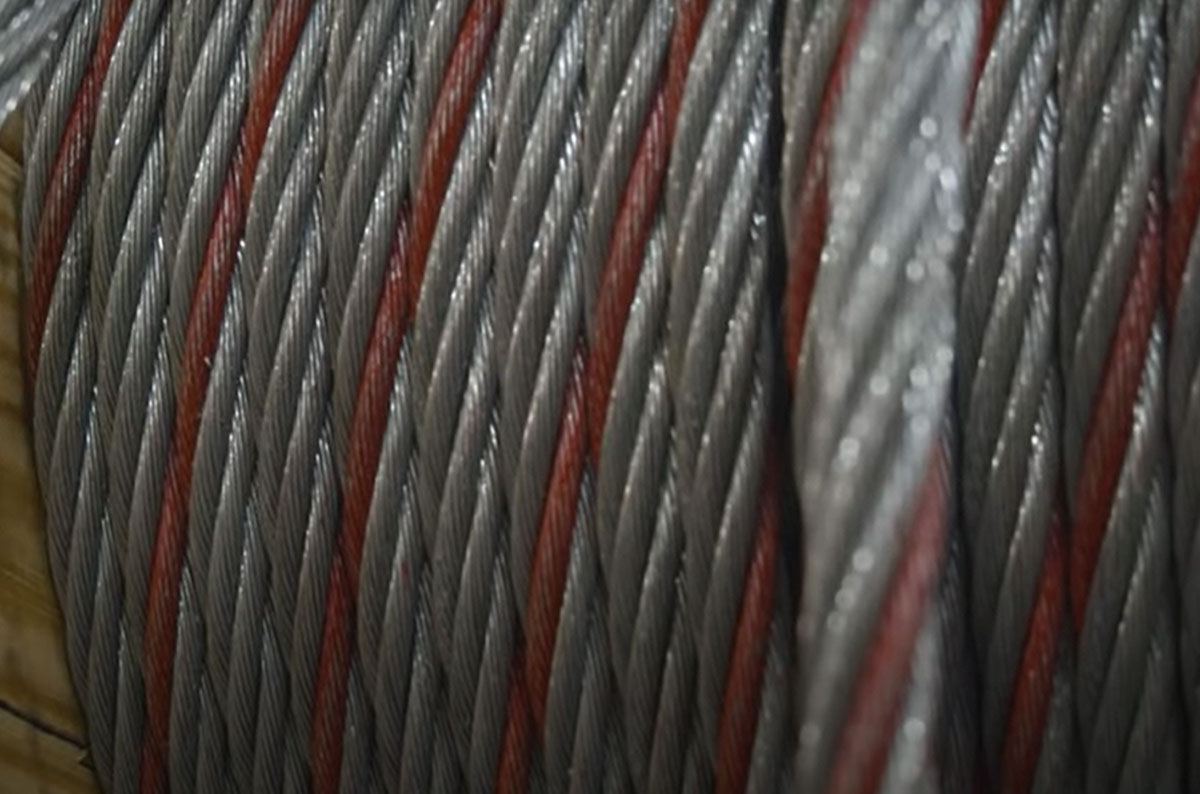
As an operations manager in need of new ropes, your machines require a specific manufacturer of wire ropes. However, when you walk into a supplier’s warehouse, you don’t know how to identify one wire rope manufacturer’s product from another.
With domestic wire rope brands, the way to identify the color strand is by looking at it. This is for general purpose wire rope only, which includes the 6×19 and 6×36 classes.
General purpose wire rope is used in the manufacture of wire rope slings, on overhead cranes, and mobile cranes. It differs from high-performance crane rope. General purpose wire rope isn’t 19-strand or 35×7.
Beginning in the 1980s, U.S. companies used color-coding systems as a form of identification to differentiate from international products. This was done to establish traceability as non-domestic manufacturers became more prominent in the wire rope industry.
Generally, you have to cut into the rope to find the core marker. In the event of a rope failure, the core marker will make it easier to identify the manufacturer. Core markers run throughout the entire wire rope. If you took a cross section of the rope, and deconstructed it, you’d find the film used to identify the manufacturer and country of origin.
Predominantly, domestic wire rope suppliers brought this to market. However, today, most manufacturers, including high quality non-domestic wire rope suppliers, also use internal core markers to identify themselves.
When it comes to the three major domestic wire rope suppliers and the color strand that identifies them, the markings unique to the brand include:Bridon-Bekaert is one blue strand that is going on its general purpose rope
Also, it’s not a hard and fast rule that every run of domestic rope has a color strand. There may be a specific reason that a run of rope doesn’t have a color. Colors are solely based on the manufacturers of the wire rope, and it’s traceability.
By reading this article, you now know the history and reasoning behind the domestic wire rope color-coding system. Also, you understand which colors represent what domestic wire rope manufacturers.
Having this knowledge should clear up confusion the next time you need wire rope. Hopefully, it will make your buying experience more efficient and user-friendly.
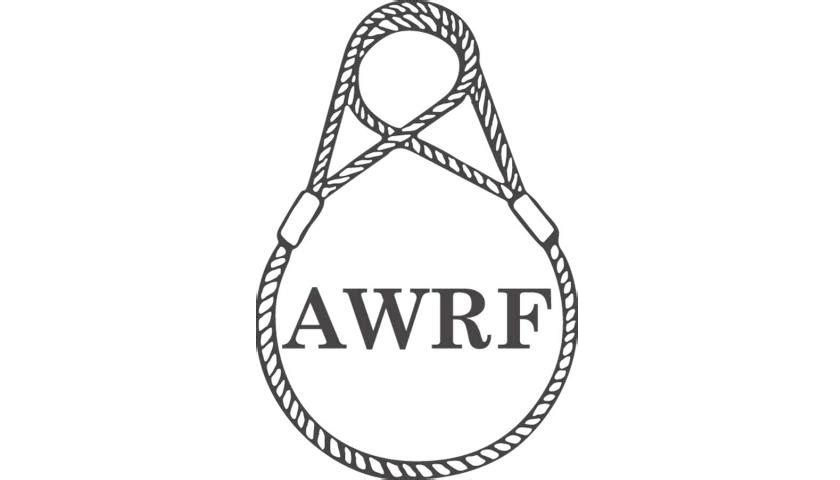
An association between Broken Hill Proprietary Co. Ltd. (BHP) and rope manufacturers in Great Britain led to the establishment in 1923 of a wire rope manufacturing facility in Newcastle. A new company was formed under the name, Australian Wire Rope Works.
A site was selected in Newcastle, and a state of the art factory was built, with advanced manufacturing equipment, producing ropes compliant with British standards. Rope manufacturing began in 1925 and in 1933 the company became a fully owned subsidiary of BHP.
After 1945, Australia entered a boom period. The economy developed strongly and in the 1950s the Wire Rope Works was involved in major nation building projects such as the Snowy Mountains Scheme. In 1958, BHP consolidated and Australian Wire Rope Works became part of Australian Wire Industries (AWI). The 1970s and 1980s mining boom required new, advanced machines and additional capacity, with the capability to produce rope up to 150mm diameter, in 60 tonne parcels.
In 2000, the Long Products steel division separated from BHP and OneSteel was formed. Recognising the key role of the rope business, OneSteel began making strategic investments, such as the installation of one of the world’s largest electronically controlled rope closers in 2002, capable of producing 200mm diameter rope, and the installation of specialist plastic infusion equipment in 2009.
In July 2012, OneSteel, as a listed company, was renamed Arrium. Concurrently the rope business was rebranded as Moly-Cop Ropes, and we became part of the global mining consumables business of Moly-Cop. In March 2015 Arrium Limited sold its Wire Ropes business to Bekaert, a Belgium based company, specialising in wire products and coatings. MolyCop ropes was rebranded as WRI Australia, representing the brand used by the Bekaert Ropes Group businesses of Wire Rope Industries in North America, who themselves have over 125 years’ experience in wire ropes solutions for the mining and industrial sectors.
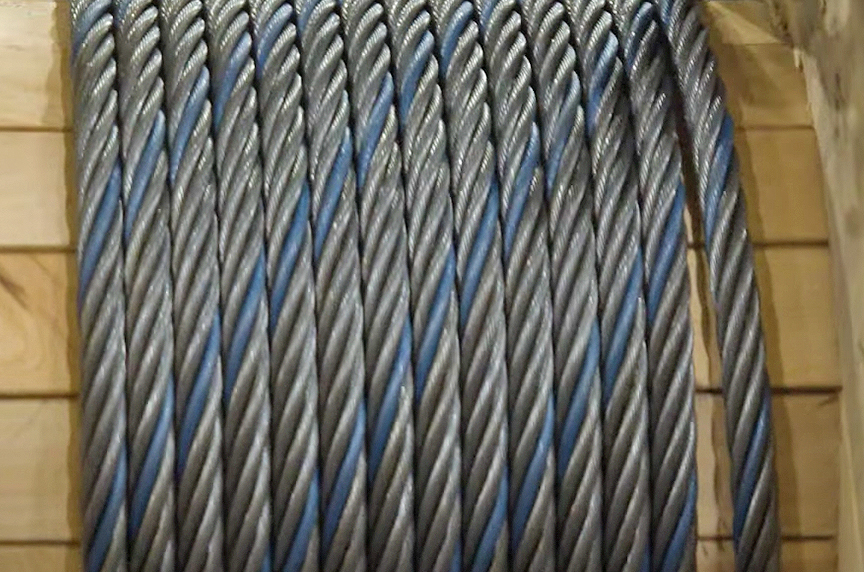
PersonalWe are on hand to personally guide you through the entire process, we translate the jargon, we recommend what’s best, and we are always here in person. No nonsense, just straight talking people who always exceed expectations through our extensive wire rope knowledge and superior service.
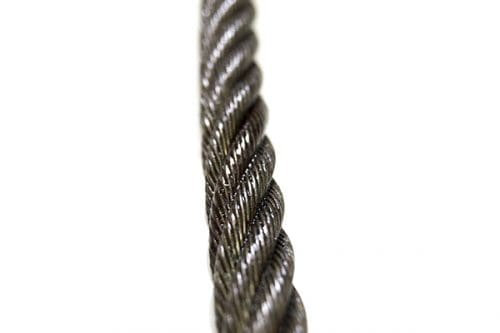
Only the best wire rope manufacturers in the world manufacture Kulkoni’s imported steel wire ropes. It has a competitive price and offers the performance and quality you expect from us. Available in 6X19 and 6X36 classes, our bright finished wire rope is easily identified by our blue and yellow colored strands. We also offer a great variety of galvanized finished steel wire ropes.
High quality. Long rope life expectancy. Our American Wire Rope™ provides dependability you rely on in challenging environments. This wire rope is made exclusively in the United States for Kulkoni, Inc. (stranded and closed in USA since 1999). It is available in 6X19 and 6X36 classes with bright and galvanized finishes to meet customers’ specific applications.




 8613371530291
8613371530291